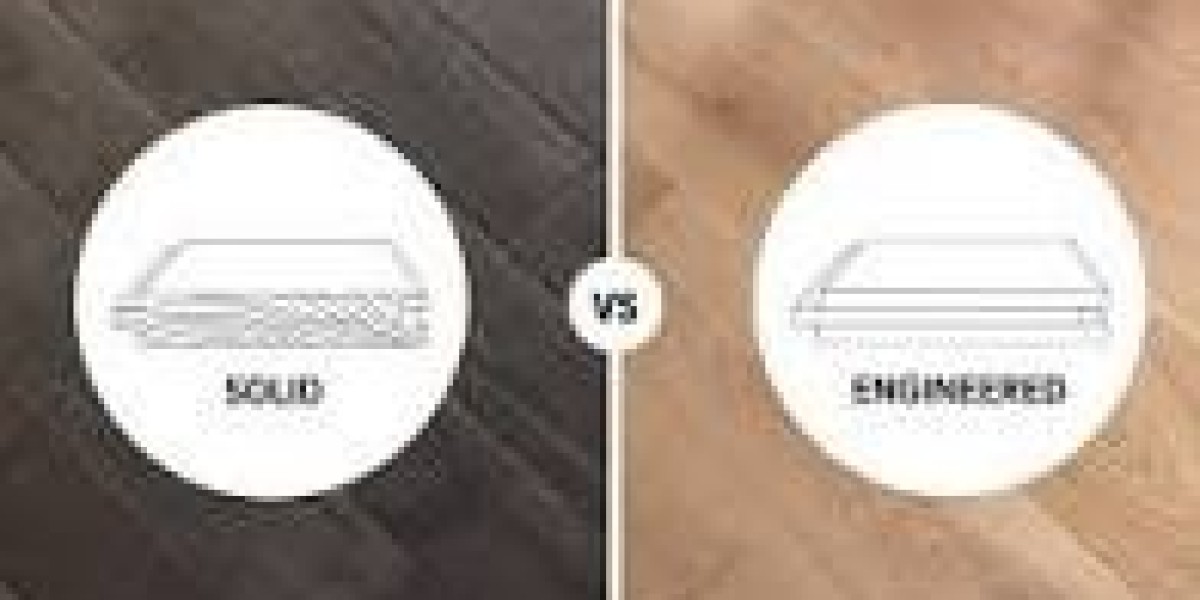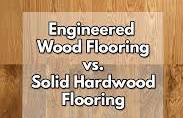When it comes to flooring options, the age-old debate between engineered wood and solid wood continues to captivate homeowners, designers, and architects alike. Both choices have their unique characteristics, advantages, and drawbacks. In this comprehensive exploration, we'll delve into the intricacies of engineered wood and solid wood flooring, helping you make an informed decision for your space.
The Nature of Engineered Wood Flooring
Engineered wood flooring installation is crafted from layers of wood veneer stacked and glued together. The top layer, known as the wear layer, is typically composed of a high-quality hardwood species, providing the aesthetic appeal of solid wood. The layers underneath, known as the core, are made of plywood or high-density fiberboard (HDF).
Advantages of Engineered Wood Flooring
Stability and Moisture Resistance: Engineered wood's layered construction imparts greater stability compared to solid wood. This makes it less prone to warping or cupping, making it an excellent choice for environments with fluctuating humidity levels, such as basements or kitchens.
Versatility:
Engineered wood can be installed in various ways, including glue-down, nail-down, or click-lock systems. This versatility makes it suitable for a wide range of applications, including over radiant heating systems.
Environmentally Friendly:
Engineered wood uses less hardwood than solid wood flooring, making it a more sustainable option. The use of fast-growing wood species for the core also contributes to its eco-friendly profile.
Cost-Effectiveness:
Generally, engineered wood tends to be more budget-friendly than solid wood. The manufacturing process allows for the utilization of less expensive wood species for the core without compromising the surface aesthetics.
Wide Range of Styles: With the top layer being real hardwood, engineered wood offers a vast array of styles, finishes, and wood species to match diverse design preferences.
Drawbacks of Engineered Wood Flooring
Limited Refinishing Potential: The thickness of the wear layer determines how many times engineered wood can be sanded and refinished. Thicker wear layers offer more opportunities for refinishing, but they may still be limited compared to solid wood.
Perceived Value: Despite its many advantages, some homeowners still perceive solid wood as a more premium and valuable option. This perception can influence the resale value of a property.
The Timeless Appeal of Solid Wood Flooring
Solid wood flooring is a classic and enduring choice made from a single piece of hardwood throughout its thickness. Common hardwood species used for solid wood flooring include oak, maple, cherry, and walnut.
Advantages of Solid Wood Flooring
Timeless Aesthetics: Solid wood exudes a timeless, natural beauty that appeals to those seeking a traditional and authentic look. The unique grain patterns and rich colors contribute to its aesthetic allure.
Longevity and Refinishing Potential:
Solid wood can be sanded and refinished multiple times, allowing it to last for generations. This characteristic makes it an ideal choice for those who prioritize longevity and the ability to refresh the appearance over time.
Enhanced Resale Value:
Solid wood is often associated with quality and luxury, potentially adding to the resale value of a home. Some buyers prefer the authenticity and prestige that come with a solid wood floor.
Drawbacks of Solid Wood Flooring
Susceptibility to Moisture:
Solid wood is more susceptible to moisture-related issues, such as warping or cupping, especially in environments with high humidity levels or below-grade spaces.
Installation Limitations:
Solid wood is typically nailed or stapled to a wooden subfloor, limiting its installation options compared to the versatility offered by engineered wood.
Higher Cost: Solid wood flooring tends to be more expensive than engineered wood due to the use of solid hardwood throughout its thickness.
Making the Decision
Ultimately, the choice between engineered wood and solid wood flooring depends on various factors, including your budget, the specific environment where the flooring will be installed, and your aesthetic preferences.
If stability, versatility, and cost-effectiveness are paramount, engineered hardwoodflooring may be the ideal choice. On the other hand, if you prioritize the timeless beauty, longevity, and potential resale value, solid wood flooring might be the perfect fit for your space.
Conclusion :
Both options have their merits, and the best choice is the one that aligns with your unique requirements and preferences. With a thorough understanding of the characteristics and considerations of each, you can confidently embark on your journey to a stunning and enduring wood floor.
Tagged:
wood flooring and installation ,
hardwood flooring installation ,
2 flooring ,
engineered wood what is ,
Engineered wood flooring ,
hardwood
Recent Posts
· Cabinets Shaker Doors: Styles and Design Ideas
· Curtain Length for 9 Foot Ceilings: Finding the Perfect Fit
· Which Is Better: Engineered Wood or Solid Wood Flooring?
· Home Depot Bathroom Sink: Everything You Need to Know
· Modern Bathroom Vanities for Tiny Bathrooms
Contact us
· Email: latestbulletins@gmail.com










